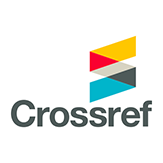Kajian Literatur Sistematis: Skema Pengendalian Biaya dalam Asuransi Kesehatan Nasional di Beberapa Negara
Abstract
Keywords
References
(1) Aaltonen, K. et al. (2010) ‘The impact of pharmaceutical cost containment policies on the range of medicines available and subsidized in Finland and New Zealand’, Value in Health. International Society for Pharmacoeconomics and Outcomes Research (ISPOR), 13(1), pp. 148–156. doi: 10.1111/j.1524-4733.2009.00598.x.
(2) Aden, C. M. (2012) Kendali Biaya & Kendali Mutu dalam Managed Care`, Tesis Universitas Gadjah Mada. Available at: file:///H:/Kerjaan PA/JEKI/Referensi tambahan revisi/Mutu Pelayanan Kesehatan.html (Accessed: 10 January 2019).
(3) Allen, H. M. (1984) ‘Consumers and choice: cost containment strategies for health care provision’, Health psychology : official journal of the Division of Health Psychology, American Psychological Association, 3(5), pp. 411–430. doi: 10.1037/0278-6133.3.5.411.
(4) Almarsdóttir, A. B. and Traulsen, J. M. (2005) ‘Cost-containment as part of pharmaceutical policy’, Pharmacy World and Science, 27(3), pp. 144–148. doi: 10.1007/s11096-005-6953-6.
(5) Andersen, L. B. (2013) ‘Health care cost containment in Denmark and Norway: A question of relative professional status?’, Health Economics, Policy and Law, 9(2), pp. 169–191. doi: 10.1017/S1744133113000248.
(6) Andersen, R., Smedby, B. and Vagero, D. (2001) ‘Cost containment, solidarity and cautious experimentation: Swedish dilemmas’, Social Science and Medicine, 52(8), pp. 1195–1204. doi: 10.1016/S0277-9536(00)00239-2.
(7) Anis, A. H. et al. (2005) ‘When patients have to pay a share of drug costs: Effects on frequency of physician visits, hospital admissions and filling of prescriptions’, Cmaj, 173(11), pp. 1335–1339. doi: 10.1503/cmaj.045146.
(8) Annemans, L. et al. (1997) ‘Pricing and reimbursement of pharmaceuticals in Belgium’, PharmacoEconomics, 11(3), pp. 203–209. doi: 10.2165/00019053-199711030-00001.
(9) Ascobat Gani, Pembiayaan Kesehatan di Indonesia, dibacakan pada seminar Sistem Pembayaran Kapitasi, Jakarta, 1996.
(10) Atella, V. (2000) ‘Drug cost containment policies in Italy: Are they really effective in the long-run? The case of minimum reference price’, Health Policy, 50(3), pp. 197–218. doi: 10.1016/S0168-8510(99)00070-6.
(11) Athanasakis, K. et al. (2011) ‘Abolishing coinsurance for oral antihyperglycemic agents: Effects on social insurance budgets’, American Journal of Managed Care, 17(2), pp. 130–135.
(12) Averill, R. F. et al. (2010) ‘Achieving cost control, care coordination, and quality improvement through incremental payment system reform’, Journal of Ambulatory Care Management, 33(1), pp. 2–23. doi: 10.1097/JAC.0b013e3181c9f437.
(13) Babayan, R. K. and Katzmann, B. (1979) ‘The Catch-22’s of cost containment’, Journal of Urology. The American Urological Association Education and Research, Inc., 122(3), pp. 283–286. doi: 10.1016/S0022-5347(17)56368-5.
(14) Barham, V. and Milliken, O. (2010) ‘Payment mechanism and the composition of physician practices: Balancing cost-containment, access, and quality of care’, Health economics, 19(11), pp. 1300–1317. doi: 10.1002/hec.
(15) Barnieh, L. et al. (2014) ‘A systematic review of cost-sharing strategies used within publicly-funded drug plans in member countries of the organisation for economic co-operation and development’, PLoS ONE, 9(3). doi: 10.1371/journal.pone.0090434.
(16) Blais, L. et al. (2003) ‘Impact of a cost sharing drug insurance plan on drug utilization among individuals receiving social assistance’, Health Policy, 64(2), pp. 163–172. doi: 10.1016/S0168-8510(02)00158-6.
(17) Breyer, F. (2002) ‘Reimbursement and Cost Containment’, Decoding History, pp. 55–68. doi: 10.1057/9780230510142_4.
(18) Burns, M. E. (2009) ‘Medicaid managed care and cost containment in the adult disabled population’, Medical Care, 47(10), pp. 1069–1076. doi: 10.1097/MLR.0b013e3181a80fef.
(19) Chang, S. (2011) ‘The Effect of Taiwan’s National Health Insurance on Mortality of The Elderly: Revisited’, Health economics, 19(11), pp. 1300–1317. doi: 10.1002/hec.
(20) Chernew, M. et al. (2008) ‘Effects of increased patient cost sharing on socioeconomic disparities in health care’, Journal of General Internal Medicine, 23(8), pp. 1131–1136. doi: 10.1007/s11606-008-0614-0.
(21) Counte, M. A. et al. (2019) ‘Global Advances in Value-Based Payment and Their Implications for Global Health Management Education , Development , and Practice’, Frontiers of health services management, 6(January), pp. 1–7. doi: 10.3389/fpubh.2018.00379.
(22) Crane, T. S. (1985) ‘Hospital costs control in Norway: A decade’s experience with prospective payment’, Public Health Reports, 100(4), pp. 406–417.
(23) Cunningham, P. J. (2005) ‘Market watch: Medicaid cost containment and access to prescription drugs’, Health Affairs, 24(3), pp. 780–789. doi: 10.1377/hlthaff.24.3.780.
(24) Davidova, J., Praznovcova, L. and Lundborg, C. S. (2008) ‘Pricing and reimbursement of pharmaceuticals in the Czech Republic and Sweden’, Pharmacy World and Science, 30(1), pp. 57–64. doi: 10.1007/s11096-007-9141-z.
(25) Davis, J. B. (1999) ‘Cost containment mechanisms in Canada’, Croatian Medical Journal, 40(2), pp. 287–293.
(26) Donev, D. M. (1999) ‘Health insurance system in the Republic of Macedonia’, Croatian Medical Journal, 40(2), pp. 175–180.
(27) Donnelley, S. (1989) ‘Cost Containment, DRGs, and The Ethics of Health Care’, Hastings Center, 19(1), pp. 5–6.
(28) Feldhaus, I. and Mathauer, I. (2018) ‘Effects of mixed provider payment systems and aligned cost sharing practices on expenditure growth management, efficiency, and equity: A structured review of the literature’, BMC Health Services Research. BMC Health Services Research, 18(1), pp. 1–15. doi: 10.1186/s12913-018-3779-1.
(29) Hadiyati, I. et al. (2017) ‘Konsep Kualitas Pelayanan Kesehatan berdasar atas Ekspektasi Peserta Jaminan Kesehatan Nasional’, MKB, 49(2). doi: http://dx.doi.org/10.15395/mkb.v49n2.1054 Konsep.
(30) Heryana, A. (2013) ‘Moral Hazard dalam Asuransi Kesehatan’, pp. 1–9.
(31) Janis, N. (no date) BPJS Kesehatan, Supply, dan Demand Terhadap Layanan Kesehatan.
(32) Manning, W. G. and Marquis, S. (1996) ‘Health insurance: the tradeoff between risk pooling and moral hazard’, Journal of health economics, 15, pp. 609–639. doi: 10.1016/s0167-6296(96)00497-3.
(33) Nelson, A., Reeder, E. and Dickson, M. (1984) ‘The Effect of a Medicaid Drug Copayment Program on the Utilization and Cost of Prescription Services’, Medical care, 22.
(34) Da Roit, B. (2012) ‘The Netherlands: The struggle between universalism and cost containment’, Health and Social Care in the Community, 20(3), pp. 228–237. doi: 10.1111/j.1365-2524.2011.01050.x.
(35) Setyawan, F. E. B. (2015) ‘Sistem Pembiayaan Kesehatan’, 11(2), pp. 360–362.
(36) Tangcharoensathien, V. et al. (2018) ‘Health systems development in Thailand: a solid platform for successful implementation of universal health coverage’, The Lancet. Elsevier Ltd, 391(10126), pp. 1205–1223. doi: 10.1016/S0140-6736(18)30198-3.
(37) The RAND Corporation (2006) ‘The Health Insurance Experiment: A Classic RAND Study Speaks to the Current Health Care Reform Debate’, RAND Health, pp. 1–7. Available at: http://www.rand.org/ content/dam/rand/pubs/research_briefs/2006/RAND_RB9174.pdf.
DOI: 10.7454/eki.v4i2.3460
Refbacks
- There are currently no refbacks.








